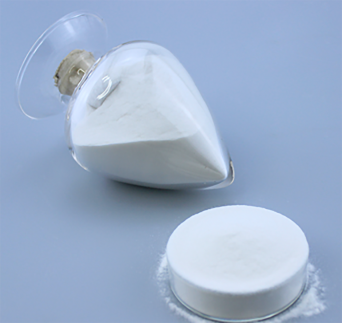
Jul . 26, 2024 16:24 Back to list
Exploring the Molecular Structure and Properties of Hydroxyethyl Cellulose in Various Applications
Understanding Hydroxyethyl Cellulose Structure and Applications
Hydroxyethyl cellulose (HEC) is a non-ionic, water-soluble polymer derived from cellulose. It is widely used in various industries due to its unique properties, including its ability to form gels, its thickening capability, and its water-retention characteristics. Understanding the structure of hydroxyethyl cellulose is crucial for grasping how these properties come about and where they can be effectively applied.
Structure of Hydroxyethyl Cellulose
At its core, hydroxyethyl cellulose is a modified form of cellulose, which is a natural polymer obtained from plant cell walls. Cellulose consists of long chains of β-D-glucose units linked by β-1,4-glycosidic bonds. In the case of HEC, hydroxyethyl groups (-CH2CH2OH) are introduced into the cellulose structure through an etherification process. This modification occurs typically at the C2, C3, or C6 positions of the glucose units, resulting in a product that contains various degrees of substitution based on the number of hydroxyethyl groups incorporated.
The incorporation of hydroxyethyl groups not only enhances the solubility of the cellulose in water but also adds to its viscosity and binding properties. The balance between hydrophilic (-OH) groups and the hydrophobic segments of the polymer chain contributes to its amphiphilic character. The degree of substitution (DS), which indicates the average number of hydroxyethyl groups per anhydroglucose unit, plays a significant role in determining the physical and chemical properties of HEC.
Properties of Hydroxyethyl Cellulose
One of the defining properties of hydroxyethyl cellulose is its solubility in cold water, which is an essential characteristic that allows it to be utilized in a variety of formulations. Upon dissolving in water, HEC forms a gel-like structure, increasing the viscosity of the solution. This viscosity enhancement makes HEC an excellent thickening agent in many products, including paints, cosmetics, and food items.
hydroxyethyl cellulose structure

In addition to its thickening abilities, HEC exhibits excellent film-forming properties. This makes it ideal for use in coatings and as a binder in various applications. HEC can form transparent, flexible films that are resistant to oils and waxes, providing a barrier against moisture and enhancing the stability of products like cosmetics and pharmaceuticals.
Furthermore, hydroxyethyl cellulose is known for its non-toxic and biodegradable nature, which raises its appeal in consumer products and applications where environmental safety is a concern. This biocompatibility makes HEC a popular choice in the development of personal care items, healthcare products, and even in food applications.
Applications of Hydroxyethyl Cellulose
Due to its versatile properties, hydroxyethyl cellulose is utilized across different industries. In the construction sector, it acts as a thickener and stabilizer in cementitious materials, enhancing workability and providing improved adhesion and water retention. In the cosmetics industry, HEC serves as a crucial ingredient in numerous creams, lotions, and gels, offering both rheological properties and moisture retention.
In pharmaceuticals, HEC plays an important role in drug formulations for its ability to control the release of medications. It is commonly found in controlled-release systems, ensuring the gradual release of active ingredients over time. Additionally, its film-forming properties allow for the creation of protective coatings for tablets and pills.
In summary, hydroxyethyl cellulose is a versatile and adaptable polymer with a structure that allows for numerous applications across various industries. Its ability to enhance viscosity, form gels, and create films, combined with its biodegradability and non-toxic nature, make HEC a valuable ingredient in many products we use daily. Understanding its structure helps illuminate the reasons behind its wide-ranging applicability and efficacy in different formulations.
-
Versatile Hpmc Uses in Different Industries
NewsJun.19,2025
-
Redispersible Powder's Role in Enhancing Durability of Construction Products
NewsJun.19,2025
-
Hydroxyethyl Cellulose Applications Driving Green Industrial Processes
NewsJun.19,2025
-
Exploring Different Redispersible Polymer Powder
NewsJun.19,2025
-
Choosing the Right Mortar Bonding Agent
NewsJun.19,2025
-
Applications and Significance of China Hpmc in Modern Industries
NewsJun.19,2025







